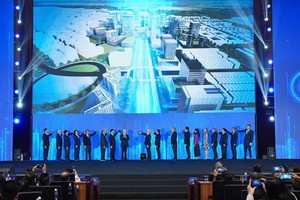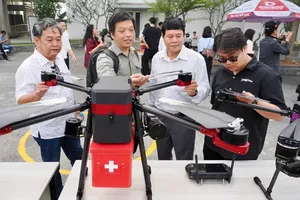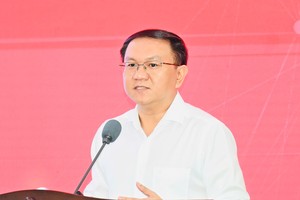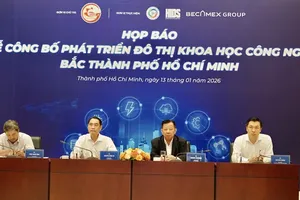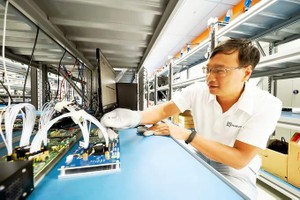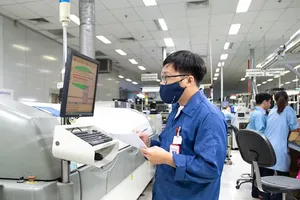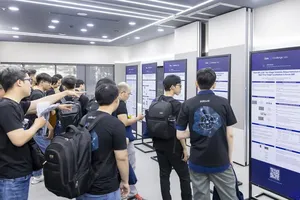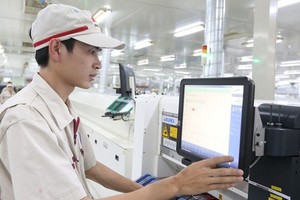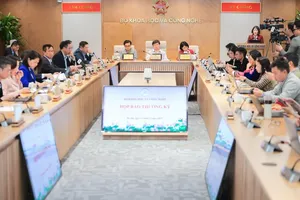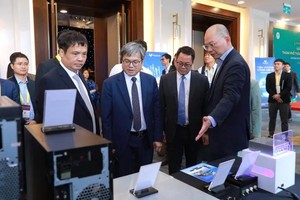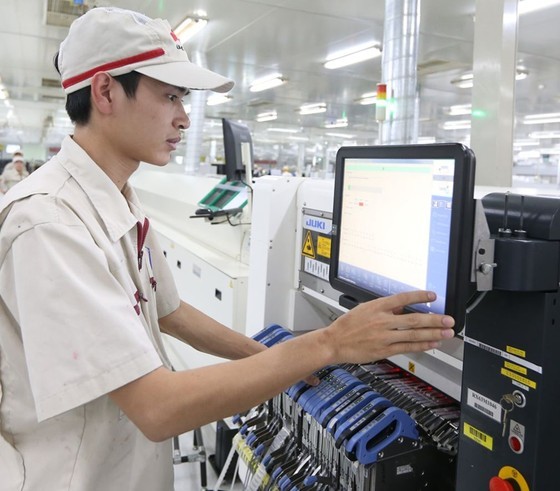 |
Producing semiconductor microchips in UMC Vietnam Electronics Co. Ltd. (Tan Truong Industrial Park in Hai Duong Province) (Photo: SGGP) |
Minister of Science and Technology Nguyen Chi Dung mentioned the determination of Vietnam to develop industries of high technologies, especially the semiconductor one, to bring more chances for the country to enter the global value chain. In the near future, Vietnam is going to be a reliable partner and a vital part of the global semiconductor supply chain.
International participants in the conference agreed that Vietnam now owns necessary conditions and factors, ranging from a stable political system, favorable geographic location, to surplus human resources and increasingly developing digital infrastructure, for its semiconductor industry growth.
Lately, the Vietnamese Government has paid particular attention to investment and partnership in the semiconductor field. The two Ministry of Planning & Investment and Information & Communications have been assigned to develop an action plan and corresponding strategies for the growth of this industry, beginning with the establishment of 50,000 capable engineers by 2030.
Minister Dung talked about the four favorable factors of suitable human resources in the technological field for the semiconductor industry; prestigious research units in Vietnam National University – Hanoi, Vietnam National University – HCM, Da Nang University, and Hanoi University of Science and Technology; leading enterprises such as Viettel, VNPT, FPT, CMC, which are willing to partner for the growth of this industry; and lastly the introduction of various investment incentive mechanisms within the legal framework of Vietnam.
These factors have helped to attract investments from giant semiconductor businesses in the US, the Republic of Korea, Japan, European countries, Taiwan (China).
Vietnam has formed its National Innovation Center (NIC) and three hi-tech parks in Hanoi, HCMC, and Da Nang City, well-equipped with modern infrastructure satisfy the demands of investors. These locations are an important factor for the creation of an ecosystem for the domestic semiconductor industry and for the positive contribution to the global one.
Chairman of the American Semiconductor Industry Association John Neuffer also pointed out the strengths and potentials of Vietnam in the field. Vietnamese laborers are hard-working despite being a bit low in quality for this specific industry. It has devoted great efforts to semiconductor research and development. The partnership with the US is going to boost the power of Vietnam and help it transform into a critical link in the global microchip manufacturing chain alongside technological giants like Intel, Marvell.
Chairman Neuffer stated that the plan to train 50,000 engineers in the semiconductor field is a wise choice showing the devotion of Vietnam in this aspect and its welcome for investments.
President of Vietnam National University – HCM Vu Hai Quan shared that his university sets a vision to be a leading tertiary educational institute in Asia for key industries, including the semiconductor one. Therefore, by 2030, it is going to train 1,800 highly specialized engineers and 500 masters in the semiconductor field.
He hoped that the Government would release the human resources development strategy for the field as soon as possible while partnering with more international universities with high-quality curricula.
Experts in the field also suggested that Vietnam can adopt three strategic breakthroughs of:
_Promoting Vietnam’s strengths in designing and packaging semiconductor circuits, including attracting more foreign direct investments from strategic investors playing important roles in the global value and supply chains;
_Fostering the establishment of domestic businesses that are able to develop ‘Make-in-Vietnam’ electronic and microchip products to first serve the national market and then international ones;
_Patiently seeking opportunities to better participate in microchip manufacturing, starting with the technologies to produce common ICs and then gradually mastering other more advanced ones.
Within the framework of this conference, the Vietnam Semiconductor Network was formally introduced. It will step by step fulfill the development directions for the semiconductor industry and let Vietnam become a reliable partnership in the regional as well as global semiconductor ecosystem, which ultimately increases the status of Vietnam in the global value chain.
